According to the Norwood scale, which categorizes grades of balding according to severity, Grade six and seven are the most advanced form of hair fall with less than 20% coverage on top. It’s estimated that around 10% -15% of all men will experience this type when they reach their 40s or 50s which is known as male pattern baldness.

A person with Grade six baldness will have hair on the sides of their head, but they will be mostly bald at the crown and front. By the time a person reaches Grade seven, the hair on their head will start thinning out and eventually, only a narrow band of hair in a horseshoe shape remains on the sides and back of the scalp.
Grade six and seven hair transplantation can be a tough decision for some. This article will discuss the worries, concerns and misconceptions on grade six and seven hair transplantation, with an accurate insight that helps you in choosing the right treatment.
Hair Transplantation: Expectation Vs Reality
Albeit being advanced forms of hair loss, Grade 6 and Grade 7 still have good chances for a successful procedure to improve the appearance of baldness. Hair transplant will generally cover most areas with partial coverage on top or full density over front-middle sections depending on your needs.
Some of the Grade six and seven patients may have unrealistic expectations for their treatment. They might insist on getting density results. They need to understand that hair taken from a small area is used to cover such a large area of baldness at the front of the scalp and the crown. We can extract only 3000-4000 grafts (around 6000-8000 hairs) from the donor area. The front and the crown area need around 50,000 hairs. Spreading out a limited amount of hair in such a vast area would mean sacrificing natural-looking hair density.
There are few things to consider before getting a hair transplant.
- How strong/thick is the hair in your donor area.
- How many hairs can be extracted.
- How much is the area needed to be covered.
- What is your expectation.
- What is the ratio of your follicular density.
- How strong/thick is the hair in your donor area?
- How many hairs can be extracted?
- How much is the area needed to be covered?
- What is your expectation?
- What is the ratio of your follicular density?
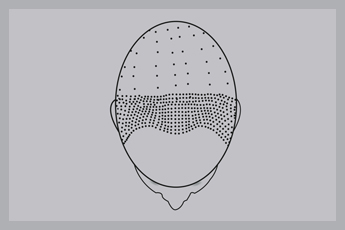
In all Grade 6 & 7 cases, graft distribution is very important. We need to distribute the grafts in the best possible manner.

In all Grade 6 & 7 cases, graft distribution is very important. We need to distribute the grafts in the best possible manner.
The hairline formation is also a key factor to be considered while doing the hair transplant. How much higher or lower your hairline will affect your appearance.
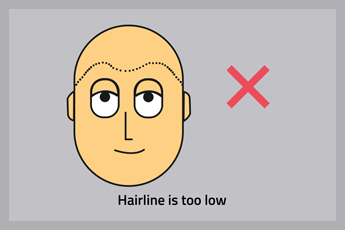
If you lower the hairline it will not look good.

If you lower the hairline it will not look good.
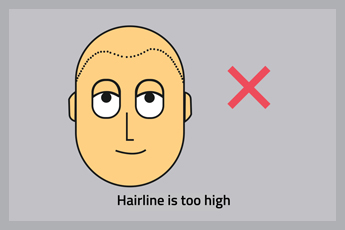
Also if it is too high it may not look good.

Also if it is too high it may not look good.
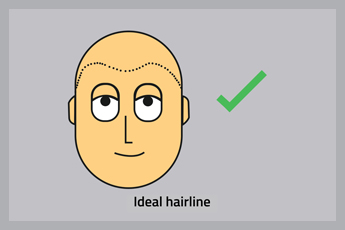
Usually, we decide the ideal hairline position according to the patient’s age.

Usually, we decide the ideal hairline position according to the patient’s age.
Some people may have grafts that have more than 1 hair. In such cases, results may be better. Results will vary from person to person. So do not expect the same results for everyone.
Case Presentation
In line with this, let us look into a case study of a Grade six patient we had at Hair O Craft’s Bangalore clinic. The patients name is Sreekumar.
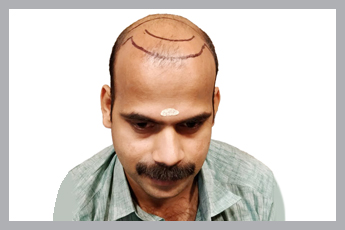
Mr Sreekumar came to Hair O Craft, Koramangala and was looking for a solution after realizing that he had Grade Six baldness. The patient was very concerned about his hair loss problem causing him stress but our team was able to help with solutions.

Mr Sreekumar came to Hair O Craft, Koramangala and was looking for a solution after realizing that he had Grade Six baldness. The patient was very concerned about his hair loss problem causing him stress but our team was able to help with solutions.
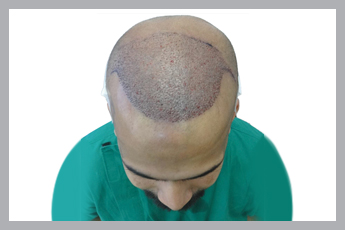
Our surgeon performed an FUE hair transplant surgery for Mr Sreekumar. Before the procedure, we ensured that he understood everything about this hair implant procedure and its cost so there are no surprises after it’s done.

Our surgeon performed an FUE hair transplant surgery for Mr Sreekumar. Before the procedure, we ensured that he understood everything about this hair implant procedure and its cost so there are no surprises after it’s done.
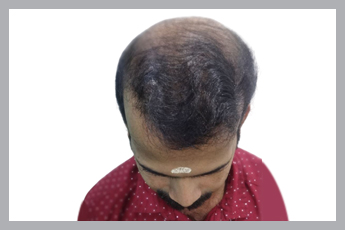
The hair transplant surgery was a success. Our surgeon carefully extracted grafts from the patient’s donor area and implanted them in the balding crown area of our patient’s scalp with perfection.

The hair transplant surgery was a success. Our surgeon carefully extracted grafts from the patient’s donor area and implanted them in the balding crown area of our patient’s scalp with perfection.
Mr Sreekumar left happy and satisfied, knowing his new look will be permanent for life!
Conclusion
Hair transplantation can give natural and aesthetically pleasing results even in advanced baldness. For those with limited donor supply, beard hairs or even body hairs can be used for transplantation. It is important that you should consult with an experienced surgeon before having surgery because talking to an experienced hair transplant expert can help you in determining how realistic your expectations are before undergoing surgery.
